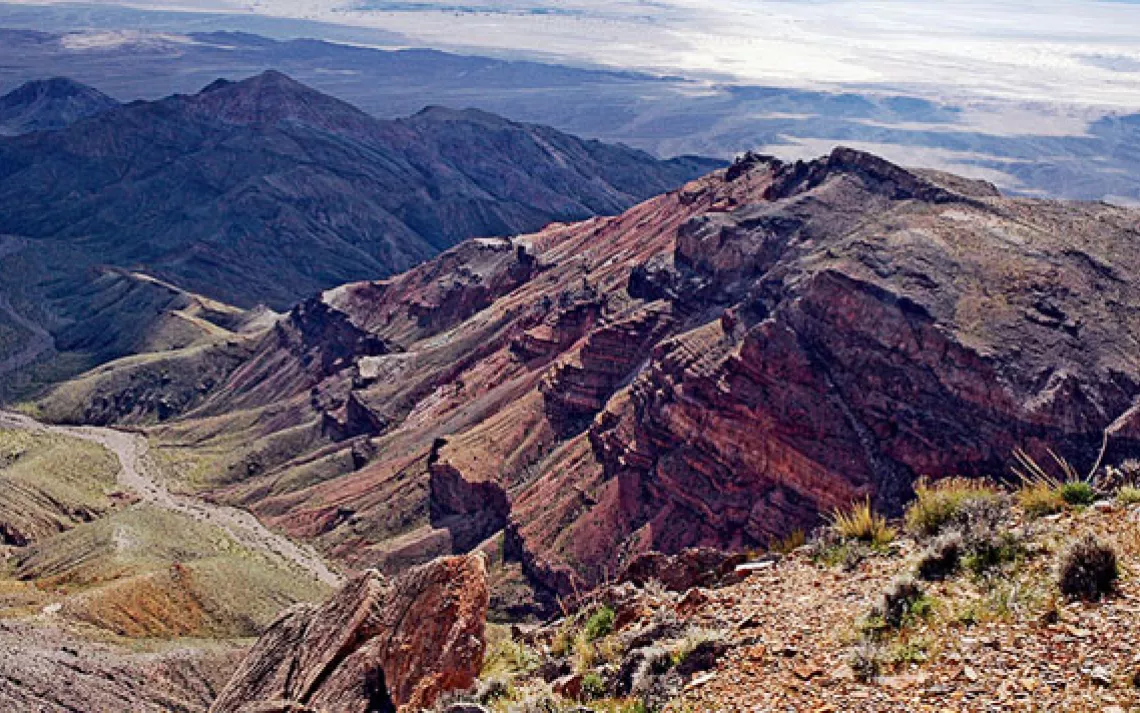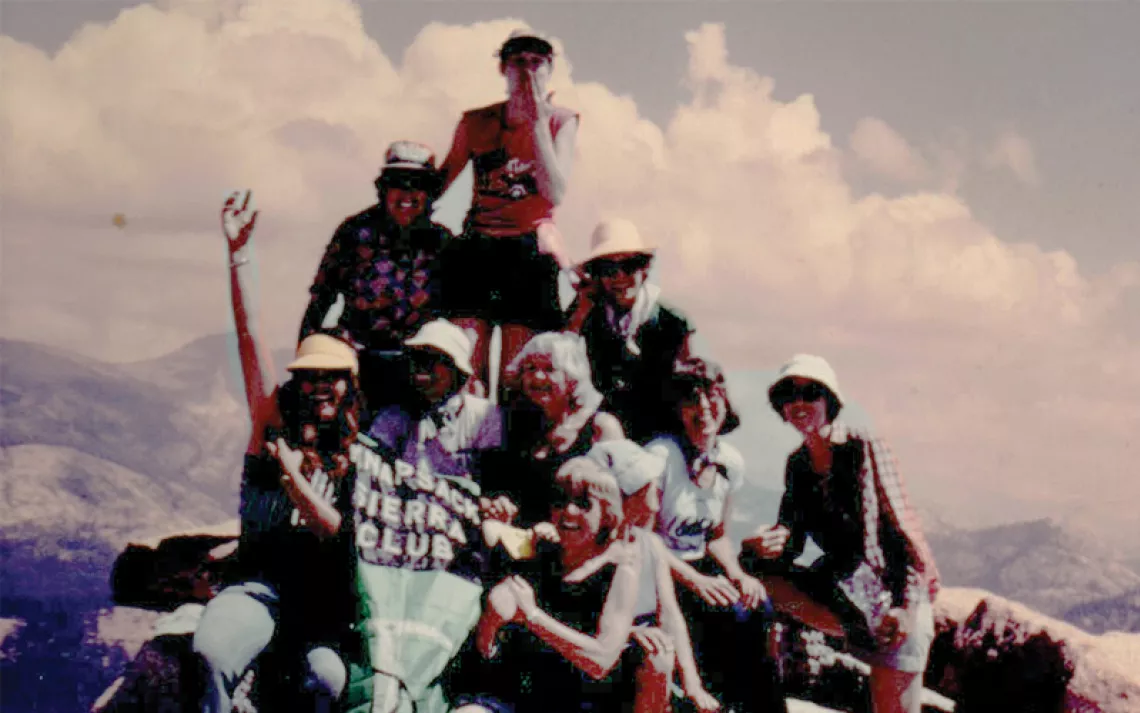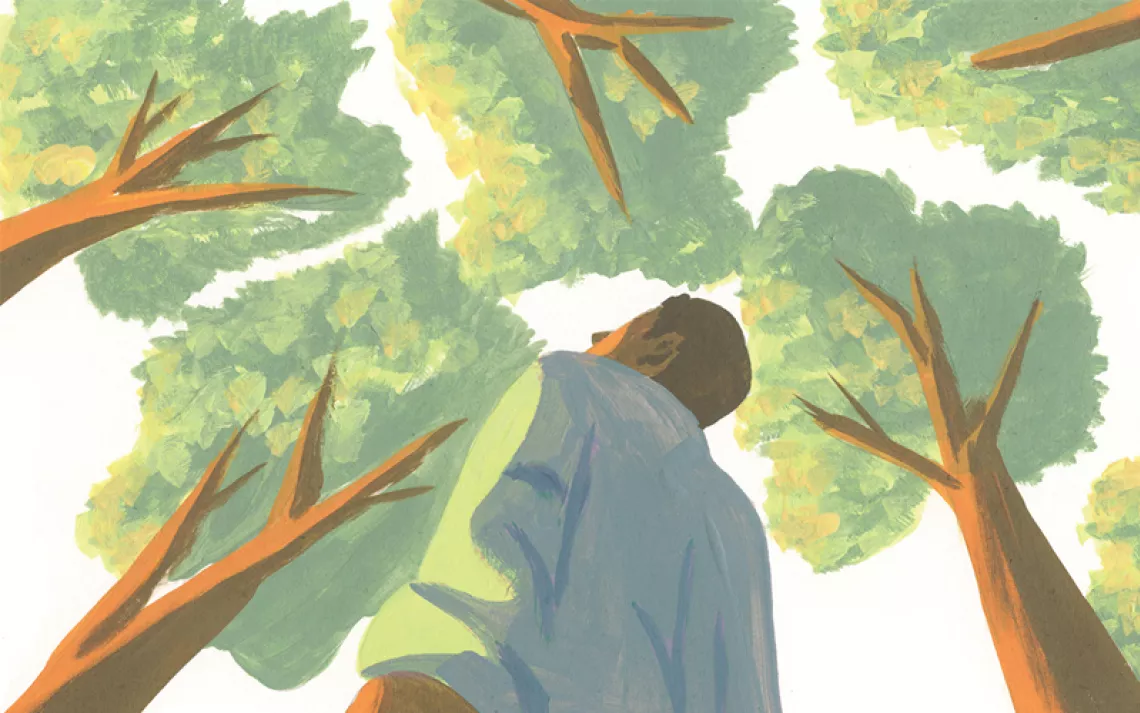Explore Corkscrew Peak, Death Valley National Park
With each new plateau, the canvas changes color

A land of extremes, Death Valley is both the lowest and the driest place in North America. | Photo courtesy of Joe Idoni
THERE ISN'T A TRAILHEAD, a parking lot, or any comforting mileage marker near Corkscrew Peak—there is only a brown Park Service sign, an arrow pointing to the sky, and an unmaintained route that culminates at a barren, treeless, blackened crest. It looks like a spinning volcano.
I've hiked it many times: once with an old boyfriend, once with a former Phish follower who made it to the top with a cigarette ready for his pierced lips, and once with a lawyer who called me a misanthrope about halfway to the top. "There is no sign of civilization here," she said, her arms crossed. "And you seem to like it."
Which is true. I never grow tired of this climb.
"Not to have known — as most men have not — either the mountain or the desert is not to have known oneself." — Joseph Wood Krutch
Today, I walk the three and a half miles alone, following grapevine pathways of gravel around desert holly, beavertail cactus, and silver cholla until I reach a small canyon at the mountain's base. A faint indent runs up a naked ridge, marked with the occasional, unnecessary cairn. The destination is always in sight, and the direction is always the same: up.
With each new plateau, the canvas under my boots changes color—from silver to pearl to bronze to olive to ruby to emerald, a muted rainbow laid on its side. Near the top, black rocks jut from the slope like thrones, and I crawl on all fours, searching for solid handholds. The last scramble makes me nervous. Loose talus encircles the mountain, where small rocks spill out in mini-avalanches around my boots. I dig my feet in, keep my head down, and strain to ascend.
My reward is a small stone arch stretching out across the sky, framing the white salinity of Death Valley on one side and Nevada's stark response on the other.
 The Magazine of The Sierra Club
The Magazine of The Sierra Club



